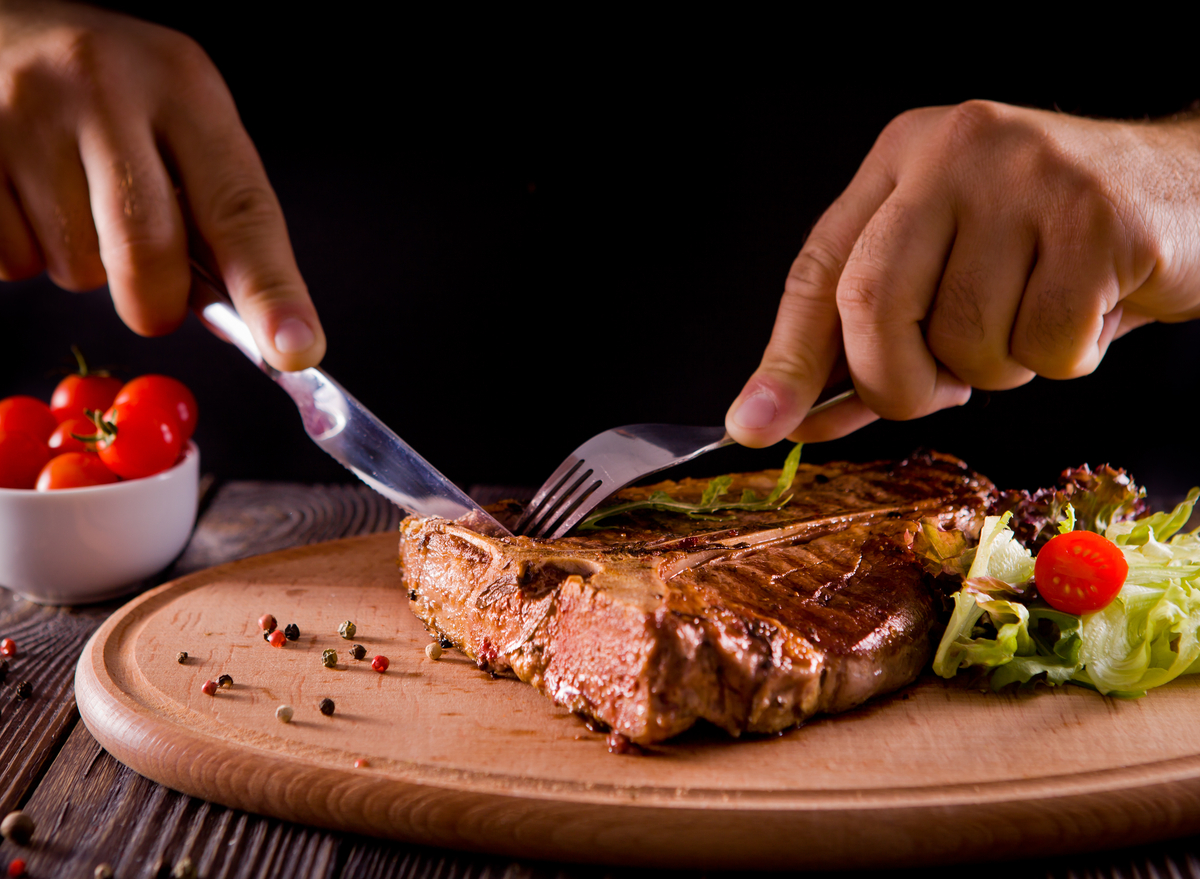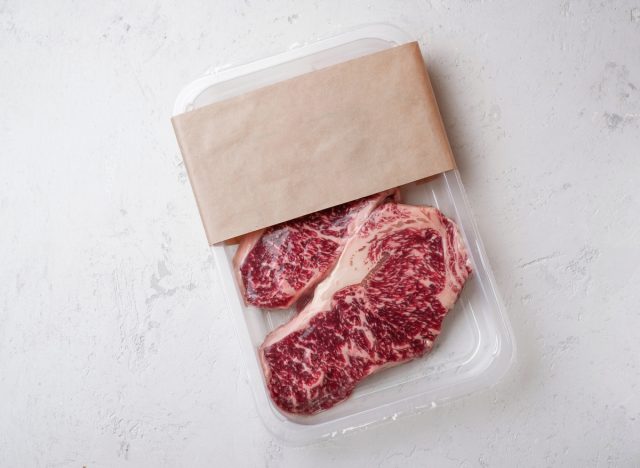Can You Eat Red Meat if You Have High Cholesterol?

Having high cholesterol can be a scary thing to manage because of its association with stroke and heart disease. Fortunately, there are ways to manage the levels of cholesterol in your blood through different lifestyle changes.
Exercising regularly, limiting the amount of alcohol that you consume, and giving up your smoking habit can help significantly, with one of the most important lifestyle factors being your daily diet.
Contrary to the common assumption that you can’t eat red meat if you have high cholesterol, Amy Goodson, MS, RD, CSSD, LD author of The Sports Nutrition Playbook and member of our Expert Medical Board says you can.
“It’s all about your cut of red meat, your portion size, and the foods you pair it with,” says Goodson. “While many people try to focus on one specific food as the culprit to various disease states, the truth is that it is about the quality of the overall eating pattern.”
Read on, and for more healthy eating tips make sure to check out The Most Crucial Eating Habit for Heart Disease.
How you can eat red meat if you have high cholesterol

The long-held belief that red meat is bad for your heart health comes from a large body of research showing that saturated fat can potentially raise your cholesterol levels. Because red meat can be high in saturated fat, many people instantly write it off as a bad idea for those trying to lower their cholesterol.
However, there are leaner cuts of meat out there with less saturated fat, which is why Goodson argues that the type and cut you choose matters significantly.
For example, research has been done on the BOLD diet (Beef in an Optimal Lean Diet), which is an eating pattern that includes vegetables, fruit, whole grains, legumes, and small amounts of lean beef. Goodson cited a specific BOLD diet study where researchers looked at how different amounts of lean beef affected the cholesterol levels of adults with “moderately high” levels already.
“Study participants experienced a 10% decrease in LDL cholesterol in two different beef diets. The BOLD diet contained 4 ounces of lean beef and the BOLD-PLUS diet contained 5.4 ounces of lean beef daily with both diets providing less than 7% of calories from saturated fat,” says Goodson. “After five weeks, there were significant reductions in total and LDL cholesterol.”
The key takeaway from this study is that the participants were able to eat red meat while keeping their saturated fat content low because they ate leaner cuts of beef and consumed an overall diet lower in saturated fat.
The importance of including lean beef in a healthy eating pattern
Goodson notes that if you’re going to eat red meat, it’s also important to include it as part of a healthy, balanced diet. She cites another study from the American Journal of Clinical Nutrition in 2021.
“This study evaluated the inclusion of lean beef into a Mediterranean diet (which consisted of 42% carbohydrates, 17% protein, 41% fat, and 8% saturated fat), and compared to an “Average American Diet,” all three Mediterranean diets with lean beef decreased LDL (bad) cholesterol,” says Goodson. “Also, in all diets, lean beef was a part of an eating pattern that contained whole grains, fruits, vegetables, low-fat dairy, other lean proteins, and had an overall lower saturated fat content.”
As you can see, these studies prove that while higher amounts of saturated fat may increase LDL cholesterol levels, you can enjoy lean beef options lower in saturated fat and still manage your cholesterol.
Tips for eating red meat while managing cholesterol levels
Which cuts of beef contain less saturated fat than others? According to the USDA, a lean cut is considered less than 4.5 grams of saturated fat per serving, and an extra lean cut is less than 2 grams per serving, so make sure to take a look at the nutrition label before you buy. The USDA has also classified cuts like top sirloin, top round roast, and sirloin tip steak as extra lean cuts of beef.
If you need some inspiration for how to incorporate lean beef into a nutrient-dense meal, Goodson suggests trying “a power bowl with brown rice, quinoa, kale, broccoli, carrots, red bell peppers, avocado and lean beef, or tacos on corn tortillas with lettuce, tomato, onions, guacamole, a sprinkle of queso fresco, and lean beef paired with a colorful salad.”









